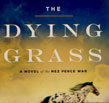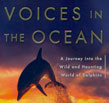 |
 |
12-19-08: Carol Lay Reveals 'The Big Skinny' : Change Your Fattitude
The problem with diet books is that they are at heart advice handed down from on high. Whenever I'm told to be a better person in some way, my natural inclination is to be a worse person, to disregard the stone tablets. In retrospect, that was probably the appeal of the meat-eating diet. Moreover, most diet books seem to be selling something beyond advice, whether it's a lifestyle or boxes of pre-cooked frozen food. Again, my natural response is, "No thanks." And I don't mean, "No, thank you very much," I mean, "I offer you no thanks for trying to tell me what the hell to do — mind your own business!"
Then there's the snake oil effect, since most of these diets present themselves as "easy." Most things that are supposed to be "easy" turn out to be either not easy or utterly ineffectual. The upshot is that when I see a new diet book, or someone tries to tell me about a new diet, I tend to glaze over and start figuring out why I have to read something else or be somewhere else.
When I first got an email about 'The Big Skinny: How I Changed my Fatittude' (Villard / Random House ; January 6, 2009 ; $18.00), I had the eye-glazing reaction. I just saw the word "Skinny" and thought, "Uh-oh!" All that changed when the book arrived however, pronto. Lay's book is a graphic memoir that is appealing on every level. It's wonderfully written and illustrated. It's funny and easy-to-read. As a graphic memoir, it's honest, revealing and refreshing. Lay doesn't cut herself any slack in her presentation of herself. We see her foibles and her fat in lovely pastels, we see her facts and her fantasies in perfect panels. She has a great sense of humor and writes with a warm sense of self-deprecation. As an author and a character, she's fun to be around. That makes the book an enjoyable chronicle of how she lost 35 critical pounds and kept them off.
But here's the real deal; it also makes her diet a lot more reasonable than anything else I've almost ever seen; this offered with the proviso that I generally avoid such books because they might give me cooties. But look, if you're going to lose weight, the first thing you're going to have to do is to be honest with yourself. At some point, you're going to have to make two lifestyle changes generally seen as unpleasant.
First, get out of the chair and start exercising.
Second, eat less food.
Damn, the second one's always the kicker.
Lay doesn't offer up any miracles. She does the math and then offers the reader help in doing the math. The bottom line is that you have to eat less and eat better food and work out more. Not a great revelation, really, but Lay's book does a great job at presenting the decisions one must make and the balance one must strike to succeed. The book is broken into entertaining segments that address all the aspects of our lifestyles that make us eat badly, from genetics to stress to peer pressure. The breezy tone and really fun illustration style make the pages fly and the message clear.
'The Big Skinny' includes a lot more than graphic memoir. There are a number of charts, lists and recipes as well as a workout program. Getting these in "graphic novel" form proves to be pretty palatable. Theyre easier to look at than typeset marching orders, and somehow more agreeable. And delicious sounding. 'The Big Skinny' may or may not change your life, but it will certainly liven up your perception of diet books — and yourself. Pretty much step one, right there. You may or may not lose weight, but you certainly won't feel as if you've lost time.
|
|
12-18-08: A Legend, A True 'Zine : Lady Churchill's Rosebud Wristlet No. 23
Look, I'm sorry, but to my mind, if you're a website, you're not a 'zine. Call me an old codger, but as a guy who started out reviewing small press 'zines ten years before the abbreviation for Universal Resource Locator was coined, 'zines have a very particular meaning for me. I'm sorry, but F&SF is not a 'zine. BoingBoing.net was once a 'zine; I used to get 'em from Mark Ziesing. Now they're a website. Cool, they rule the world and they started as a 'zine. Whatever website or magazine makes claims to be a 'zine is not. Remember, 'zine is short for fanzine. And 'zines come in the mail, not in your browser. They're stapled, and they look kind of funny, compared to say F&SF, or Interzone or Locus.
But it's a funny look we love, especially when the production values are as high as those of Lady Churchill's Rosebud Wristlet No. 23. LCRW (I've earned the abbreviation, havent I?) is a pleasure to read on all levels. The type is readable. The content is superb. It has staples in the middle. It has William Alexander in the middle; Ted Chiang on the left and three poems by Kim Parko on the right. And lots of others too, some of whom you've probably seen, heard of or read (Mark Rich, Chris Nakashima-Brown, Kat Mead) and some of whom you shall soon probably see, hear of or read (Kirsten Allio, Angela Slatter, Anna Sears). And others who will just sear your mind with out so much as a fare-thee-well (Nick Wolven, Susan Wardle, Jodi Lynn Villiers, Daniel Lanza, Christa A Bergerson, Abby Denson, Kevin Huizenga). Of course, you can find LCRW on their website — which is just that, not the 'zine. You can probably buy the 'zine there, and what's more, afford it.
It is noted in the TOC page that LCRW does not need a federal bailout. But what is not noted is that perhaps, just perhaps, 'zines are the future of print journalism. I looked at this issue of LCRW and couldn't help but think, "Hell, this is the perfect format for this new Great Depression we got going here in the US of A. I bet it ain't long before the LA Times starts lookin' a lot like LCRW, but without all the great journalism. I mean, is the LA Times going to pull in Ted Chiang to solve 'The Problem of the Traveling Salesman'? I dont think so. Is the LA Times going to introduce you to "A Wizard of MapQuest" under the fine auspices of Alex Wilson? I can't see it. They certainly don't have the yarbles to address "The Girl With No Hands" by Angela Slattery, though news can't get much harder than the news of Devil she delivers. No," I tell myself, "in the future, we'll all have websites generated by the AI's at Google from the moment of our birth. But only the few, the proud, the FANS, will still staple together the 'zines."
Of course the people I pass as I say this strolling down Pacific Avenue look at me like the next words to come out of my mouth will be, "Change?" But I know — change comes from within, man. From 'zines in general — and Lady Churchill's Rosebud Wristlet in particular.
|
|
12-17-08: Jordan Summers is 'Red' : Return of the Red-Edge Pages
The last book I held that had red-edged pages was my 1960's vintage, movie tie-in copy of Ian Fleming's 'Goldfinger.' Pulling it from the shelves, I found a copy of K. W. Jeter's delightfully diabolic 'Dr. Adder' with pee-yellow-edged pages and my green-edged copy of Harlan Ellison's 'The Glass Teat.' (Thank you Janis Bell for hyphen help. And note that I'm outing the periods inside my non-standard single-quotes-for-book-titles, though it's killing me, I tell you it's killing me!) I always found these colored pages sort of off-putting back when I was buying the mass-market paperbacks. Funny how things change.
The red-edged pages of Jordan Summers' 'Red' (Tor / Tom Doherty Associates ; November 4, 2008 ; $6.99) were the first thing to catch my eye and make me look twice at yet another paranormal romance. Who would have thought that sex, the supernatural and a soupcon of romance (a heavily-breathed "I love you!" uttered somewhere in the midst of the other two) would be the saviors of the publishing world? I dont know that I would have called it, but the fact of the matter is that if you actually dare to open 'Red' and read it, you might find yourself surprised with some very strong writing.
'Red' opens with a gripping vision of ... dinner, lyncathrope style. When we wake up from this craftily arranged nightmare, we're in a near future where Gina Santiago, hot as a summer day is long, is a sort of techno-cop who will find herself hunting, but not for dinner. Yes, you'll find a Hunky Sheriff in a Podunk Town With a Secret. And plenty of steam heat to fog up the windows. But Summers does a pretty damn decent job of spraying the red about and her world is a nicely designed mix of SF and supernatural tropes. And there's more than a bit of humor at work here as well, when dropped trousers don't lead in the expected direction.
But all this begs the question ... will the red-edged pages work their wonder? It's an obvious combination, of course, the title 'Red', the werewolves, the Little Red Riding Hood with a Secret theme and — the red-edged pages. As I said above, back in the day, I didn't like the color-edged pages. They seemed, indeed they were, cheesy. But now they just hit my reading nostalgia zone and I think, wow — cool. I imagine a teenaged version of myself in the 21st century taking this book off the shelf, and it's red from cover to cover. It has that Mickey Spillane paperback feel, sleazy and sexy. Teenaged me thinks, I'll read this ... but wont show anyone. I'll pay cash for this book.
|
|
12-16-08: Janis Bell Redux, with edits : Changing the past
Click red strikethrough mistakes to see Janis Bell's answers
Today, I'm podcasting a feature-length interview with Janis Bell, author of 'Clean, Well-Lighted Sentences.' It kills me to put that period inside my non-standard single quote, which can be pried from my Reynaud's-Phenomena-tinged fingers. With no further ado, here are Janis Bell's corrections to my original commentary on her book. Let the red ink flow! (Period inside single quote -- check; hyphens in " feature-length," " non-standard," and "Reynaud's-Phenomena-tinged," — check; subject-verb agreement "here are .. corrections" — check; commas inside quote in nested comment — check!) (I hope at least it checks, but shall refrain from further recursive embarrassment.)
Looking for a successor to the one of the best and best-selling books of all time? She could have called it 'Elements of Style II', but Bay Area resident Janis Bell echoes the name of a famous bookstore in her entertaining HOWTO write book, 'Clean, Well-Lighted Sentences'. Sentences.' Yes, I'm a rule-breaker with my single-quotes-around-the-title style. I know because I looked it up, I looked it up and found an entertaining little dissertation on using quotes based around the song "What's Love Got to Do With It?"
There's a delicate balance to be struck with a book on grammar. It's got to have the rules, right there in a readable fashion, but that's a lot harder than it sounds. Write up just the rules and you've got unreadable gobbledygook. Nobody is ever going to read your book, and they're not going be tempted to pull it off the shelf when they need it either. Write more than the rules, and it becomes hard to find the rules, so even if it does get read, it won't get used. What's an a English professor and writing consultant to do?
You can get a good idea in 'Clean, Well-Lighted Sentences' (W. W. Norton & Company ; September 2, 2008 ; $21.95) by Janis Bell. Here's a book that is entertaining when it needs to be — all the time — and informative when it needs to be — all the time. It's a pleasure to read and yet, if you need a quick rule fix, you can find it in a trice. I know because I looked up the single-quotes question in precisely one trice. My watch measures those. It's unusual.
Bell is very straightforward and quite organized, which is of course admirable in a rule book. After a preface which that explains the layout and usage of the book, she starts out by defining the grammar terms she's going to use. Then you get 8 7 clean, clear chapters of writing HOWTO that will help anyone who ever has to write. It's a book that won't ever get in your shelves.
What Bell brings to the world of grammar is a dry wit that is ever enjoyable, which she deploys in a series of instructive and entertaining examples that demonstrate the Rules. From Chapter 1: Case, she explains, that,
"Nouns don't change form when they serve as subjects and objects. Josephine, for example, remains Josephine, no matter where she shows up:
Josephine eats anything that isn't nailed down.
Food is irresistible to Josephine."
Each chapter concludes with a test, and they're as entertaining as the chapters. From Chapter 1, here's the first paragraph you're supposed to edit for case:
"Dear Josephine:
I just finished reading a chapter whose focus is largely on you. I feel I should know you well by now, but between you and I, you're still pretty much of a mystery to me."
Click to see answer
That lighthearted light touch is just breezy enough to make this book a lot of fun to read cover to cover. (Looks up dashes, none needed.) But just as importantly, if you need to figure something out, you can easily do so, in yes — a trice. But you can only verify that it took a trice if you have my special watch. Bell's book is a lot easier to find, and ultimately, far more useful. You want to be a better writer. Put this book on your desk.
|
|
12-15-08: A Review of the movie 'Timecrimes' : The Script as Special Effect
Spanish filmmaker Nacho Vigalondo's first film, Timecrimes ("Los Cronocrímenes") is a masterpiece of lean, smart filmmaking that seamlessly marries noir and science fiction using the strengths of each genre to amplify the suspense, believability and entertainment of a superb story. It's very simple. Hector (Karra Elejalde) is a goofy-looking, middle-aged man staying in a country house with his wife, Clara (Candela Fernández). There's not a lot to do, so when Clara heads off to town, Hector sits in a lawn chair in the yard with a pair of binoculars, peering out into the forest that surrounds the house. When he glimpses a beautiful young woman (Bárbara Goenaga) taking off her clothes in a nearby clearing, he heads off to investigate. When he finds her things begin to go awry, and not so long after Hector takes refuge in a nearby research institute where Chico (played by the director) is a student using the gear on sly while the real scientists are away. Chico has Hector hide in something that looks like an unglamorous decompression chamber. When Hector emerges, he finds out he's traveled back in time — but just one hour. That's enough however, to set off a series of events that keeps Hector and viewers on edge for the remainder of the film.
Timecrimes' script is brilliantly sparse. By keeping things simple, Vigalondo is able to keep viewers engaged in both the crime and the time travel elements of the film. There's a constant edge of unease here, underpinned by everything from Hector's voyeurism to Chico's perfidy. But it's a generous unease, with an understated sense of humor. We know that none of these people is an unrealistic cackling bad guy. They're a couple of bumbling everymen who, when they manage to come into one another's proximity, multiply their ineptitude to the point where it may clearly become fatal for anyone in the immediate vicinity. The harder they try to make it right, the more wrong it becomes. Every action seems to be well within reason based on what has come before, but quite quickly every action becomes more farcical — and potentially more deadly.
Vigalondo directs all this with a naturalistic, almost gritty feel. But the Spanish countryside where the movie is set is gloriously beautiful, so it's not some kind of faux-dirt noir. There's a peaceful feel that suffuses the visual element. It lends an authenticity to the narrative, playing down the humor inherent in the script and giving it a bit of heft. We actually care about Hector, Clara, Chico and the unnamed undresser, thanks to excellent performances and casting. I must say, though, that the very average-looking Hector is quite lucky to have landed someone as attractive as Clara.
The time travel and noir genre elements are deftly mixed, and this keeps the plot moving quickly without seeming rushed or contrived. Vigalondo brings viewers into the story with the mirror effects of the time travel and the crime-fiction character complications of noir, as we struggle to keep one step ahead of Hector and his ever-escalating predicament. It's edgy and exciting, but not cruel — just unusual. Timecrimes marks the debut of a great writer, filmmaker and actor. Nacho Vigalondo's movie will have viewers thinking about the plot and characters long after the film ends with the same affection and depth we might think about a great novel. Appropriately, the movie seems almost like a memory implant, cut-and-pasted into the sequence of the viewer's life. You'll know you can't see it the same way the second time, but you'll want to anyway.
|
|
|
 |
|
|
|




